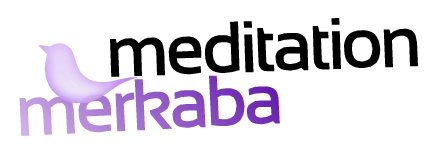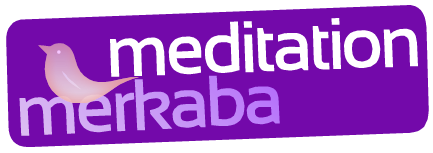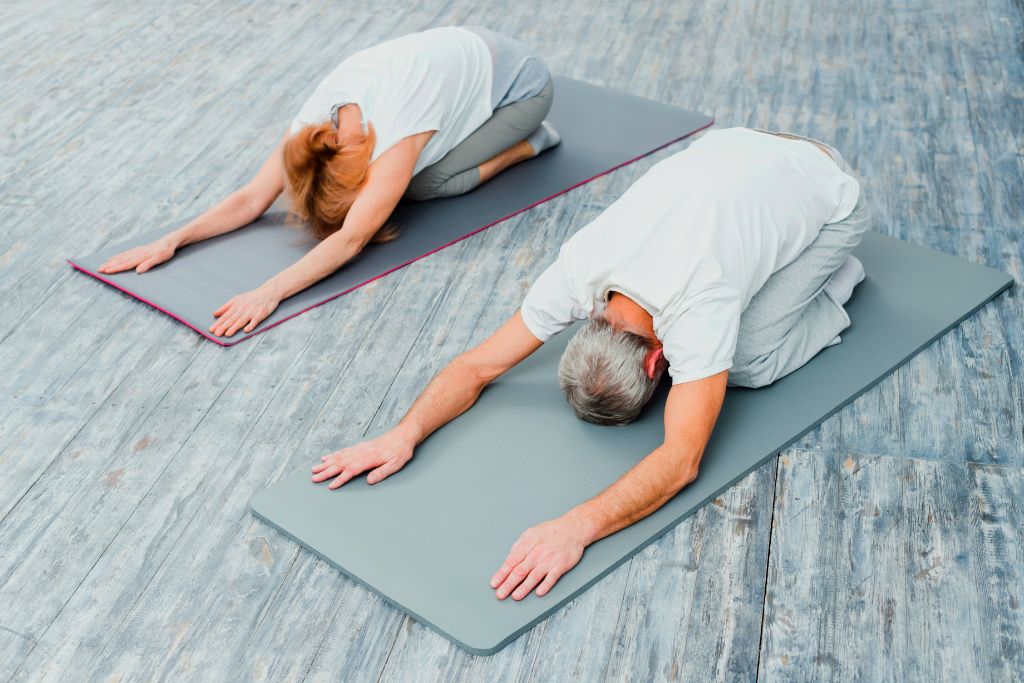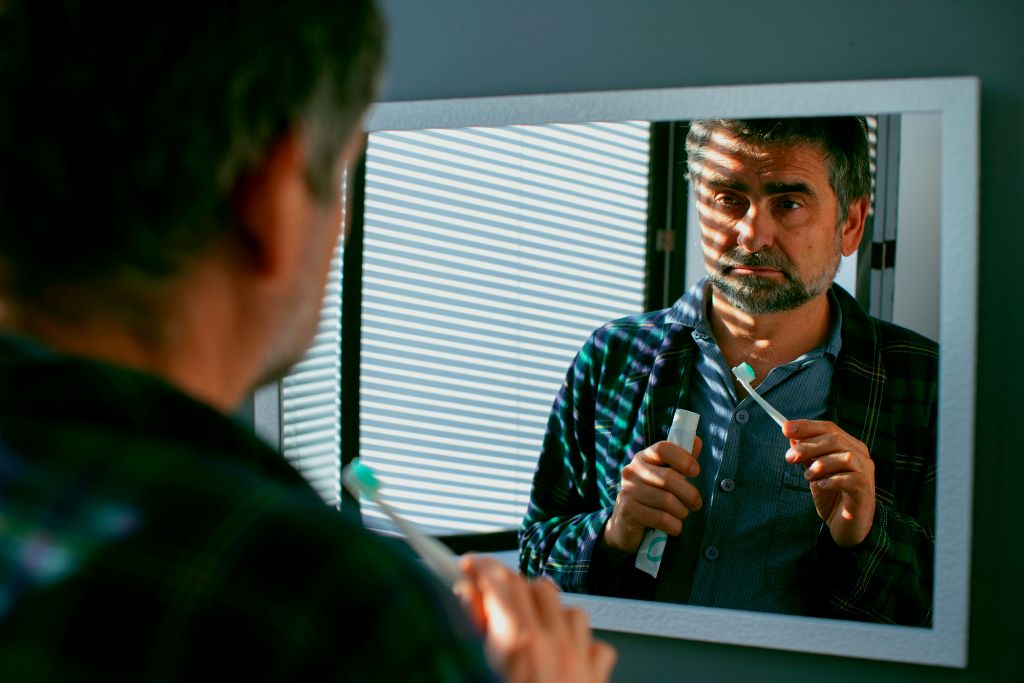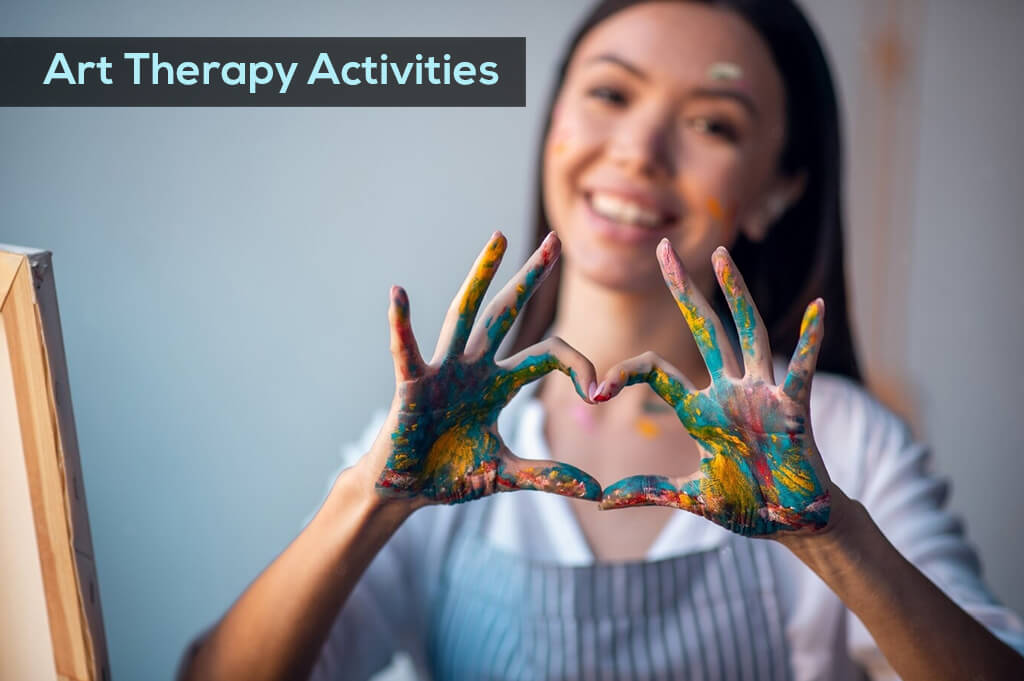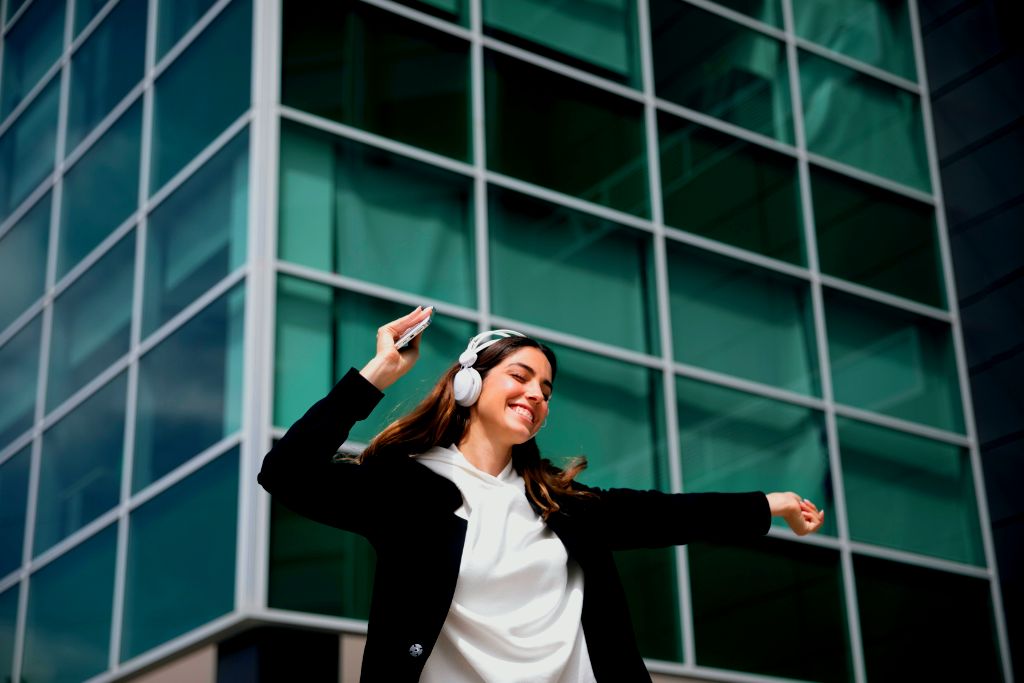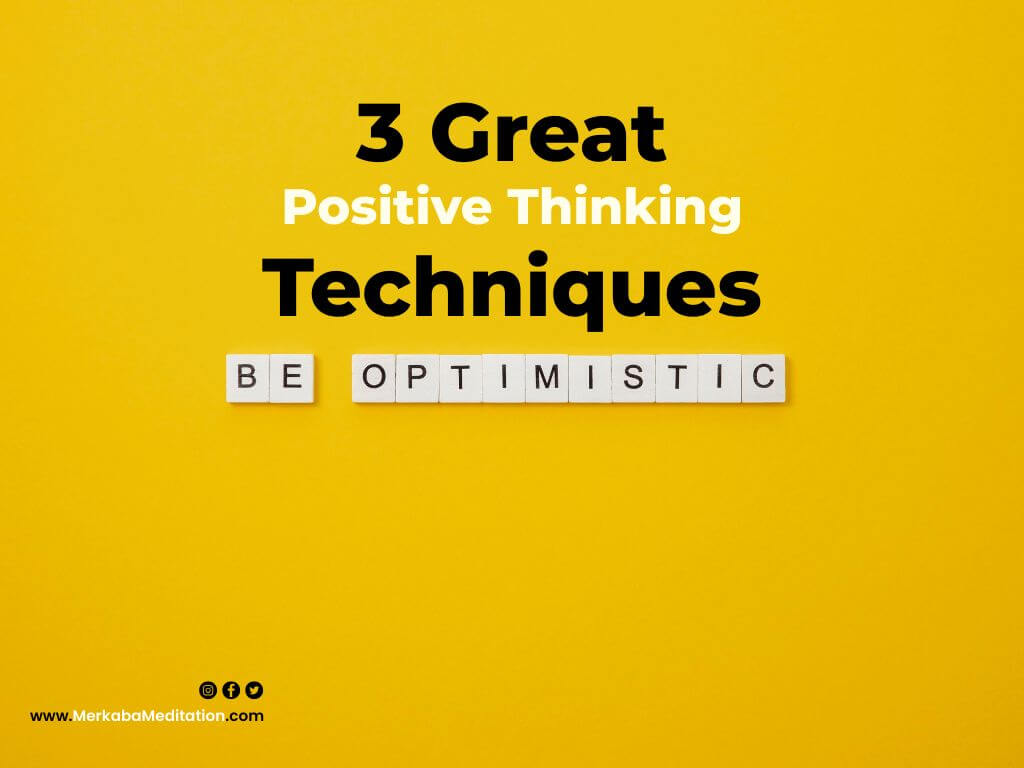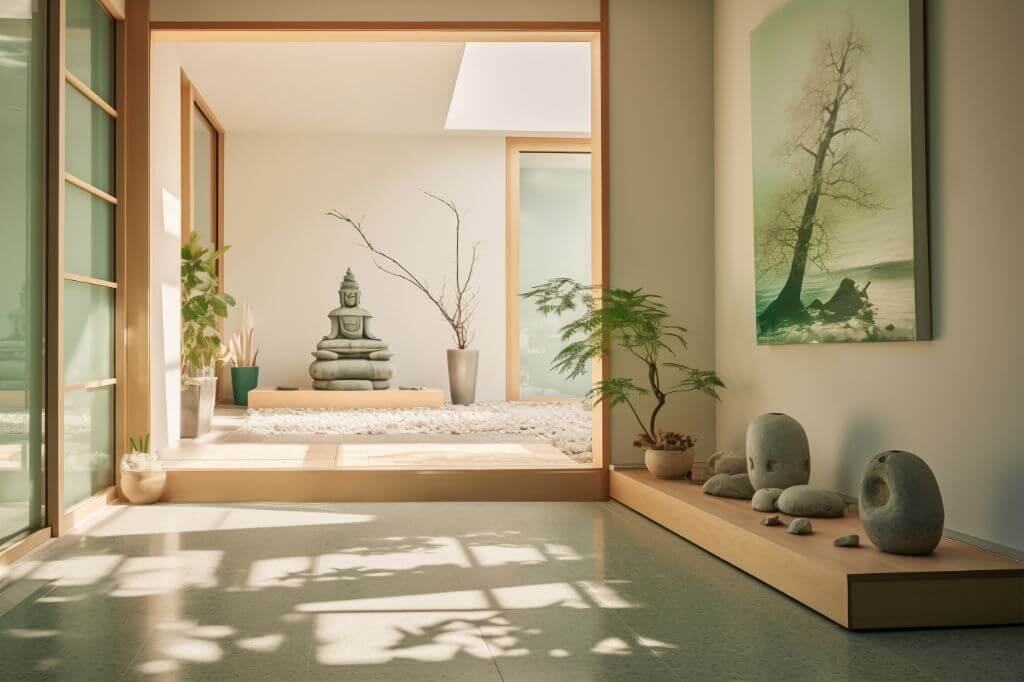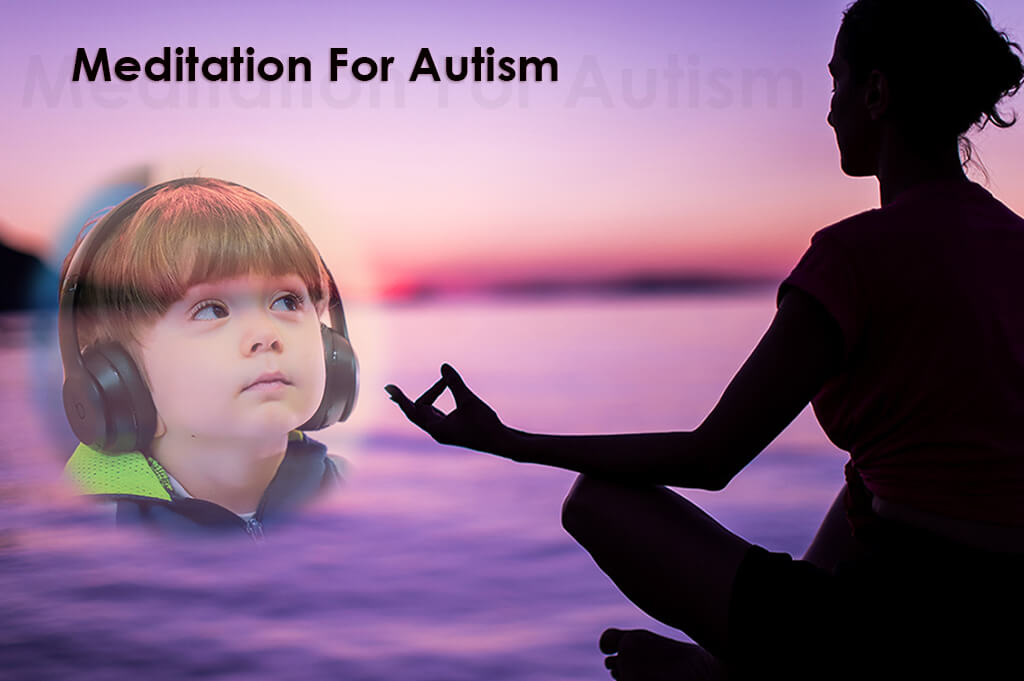In the bustling rhythm of today’s world, finding a moment of tranquility can seem like a distant dream. But what if you could create an oasis of calm within your own body and mind? Enter restorative yoga, a gentle and nurturing sequence designed to release tension and foster a deep sense of peace. This practice uses supportive props and soothing postures to guide your body into a state of complete relaxation. Whether you’re a seasoned yogi or new to the practice, a restorative yoga sequence offers a transformative path to serenity, healing, and balance. Let’s explore how this gentle form of yoga can be your sanctuary in the chaos of everyday life.
What is a Restorative Yoga Sequence and Why Is It Beneficial?
A Restorative Yoga Sequence incorporates specific yoga postures designed to allow deep physical and mental relaxation. In a restorative yoga class, you might start by placing a bolster lengthwise behind you and sitting in front of it with the soles of your feet together and knees bent, dropping to the sides to open up the inner thigh area. Gently lie back onto the bolster, ensuring to place a folded blanket under your head for neck support and maybe place another under your lower back or thighs for added comfort. This position, known as the reclining bound angle, is one of the best restorative yoga poses to start with because it opens up the pelvis, spine, and upper body gently.
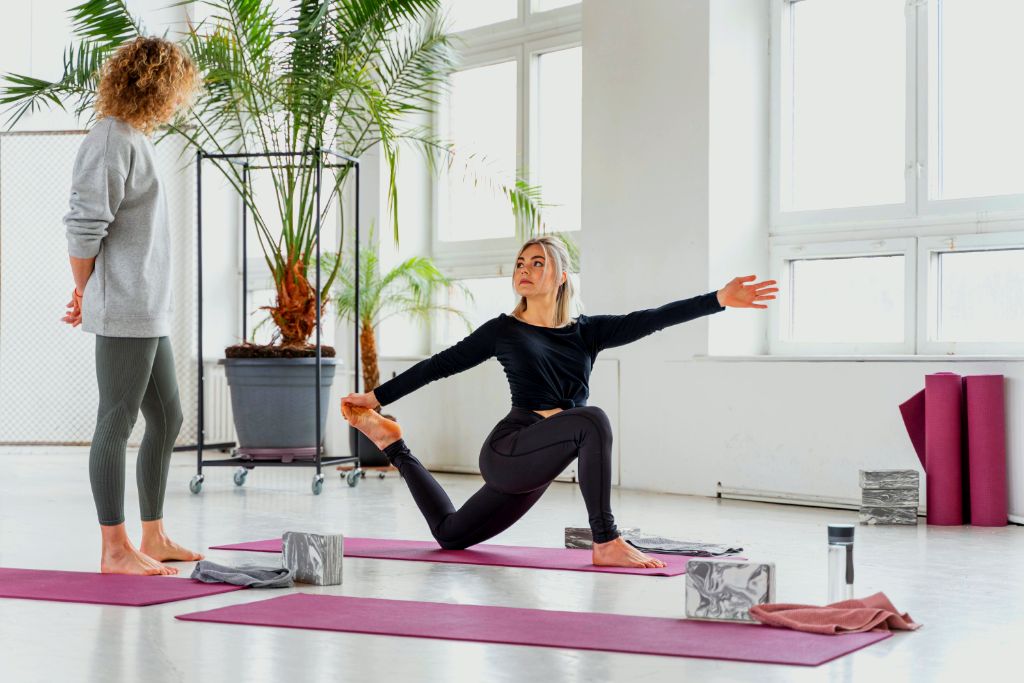
Hold each restorative pose for 3-5 minutes, allowing your muscles to relax completely and your mind to calm. To enhance the experience, you might place a blanket over your body for warmth and rest your hands on your belly or lay them arms out to the sides, palms up, to open the chest. As you close your eyes and turn your head to one side, the goal is to release tension not just in the body but also in the mind. This style of yoga can significantly relieve stress and anxiety, making it an excellent practice for bringing about a state of mental calmness and physical ease.
This article could be of interest to you: Advanced Bikram Yoga Poses
Understanding the Basics of Restorative Yoga Practices
Facing the bolster can help you find a comfortable position to practice restorative yoga. Start by placing the bolster with your legs and resting your legs onto the bolster. You can also try top of your right after a few minutes as well. This following sequence can help you find the edge of the bolster and deepen your practice.
How Restorative Yoga Poses Promote Relaxation and Healing
Restorative yoga poses are specifically designed to promote relaxation and healing in the body. By using props such as a bolster to support the body in various positions, practitioners are able to completely relax and release tension in the muscles. These poses often involve gentle stretching and deep breathing, which helps to calm the nervous system and reduce stress levels. When the body is fully supported and able to rest deeply, it can enter a state of healing and restoration. As a result, regular practice of restorative yoga poses can help to improve flexibility, reduce pain, and promote overall well-being.
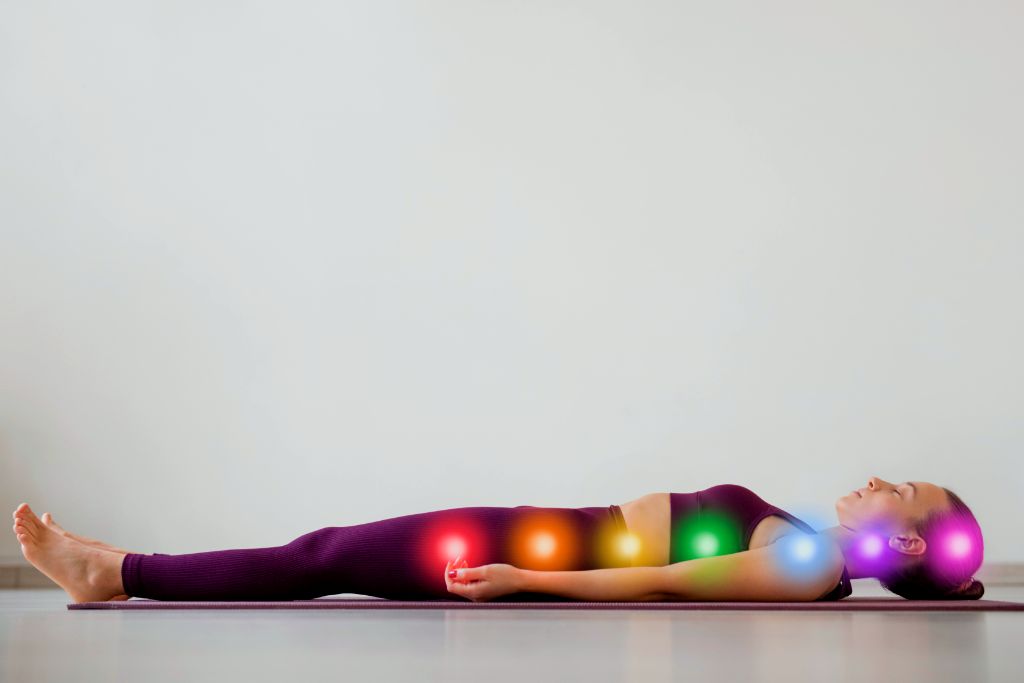
The Role of the Nervous System in Restorative Yoga
The nervous system plays a crucial role in restorative yoga by allowing the body to enter a state of deep relaxation and healing. When we place our body in supported, comfortable poses using props such as blankets, blocks, and bolsters, the nervous system is able to shift into parasympathetic mode, also known as the “rest and digest” state. Here, the body can focus on repairing tissues, reducing inflammation, and calming the mind. By consciously relaxing the muscles and focusing on deep breathing, we can further support the nervous system in its role of facilitating restoration and rejuvenation. Through regular practice of restorative yoga, we can help to create a harmonious balance within the nervous system, leading to improved overall health and well-being.
Top 10 Restorative Yoga Poses for Ultimate Relaxation
For those looking to unwind and destress, practicing this restorative yoga sequence can be incredibly beneficial. Begin at the front of the mat, lying flat on the floor on your back with your knees bent and feet on the floor. This gentle start prepares your body for relaxation. Place a bolster or blanket under your knees to support the hips and lower back, easing into comfort. Restorative yoga poses are best done with the aid of yoga props, like a rolled-up blanket or a bolster, to enhance the experience and allow the body to fully relax and arch your back gently.
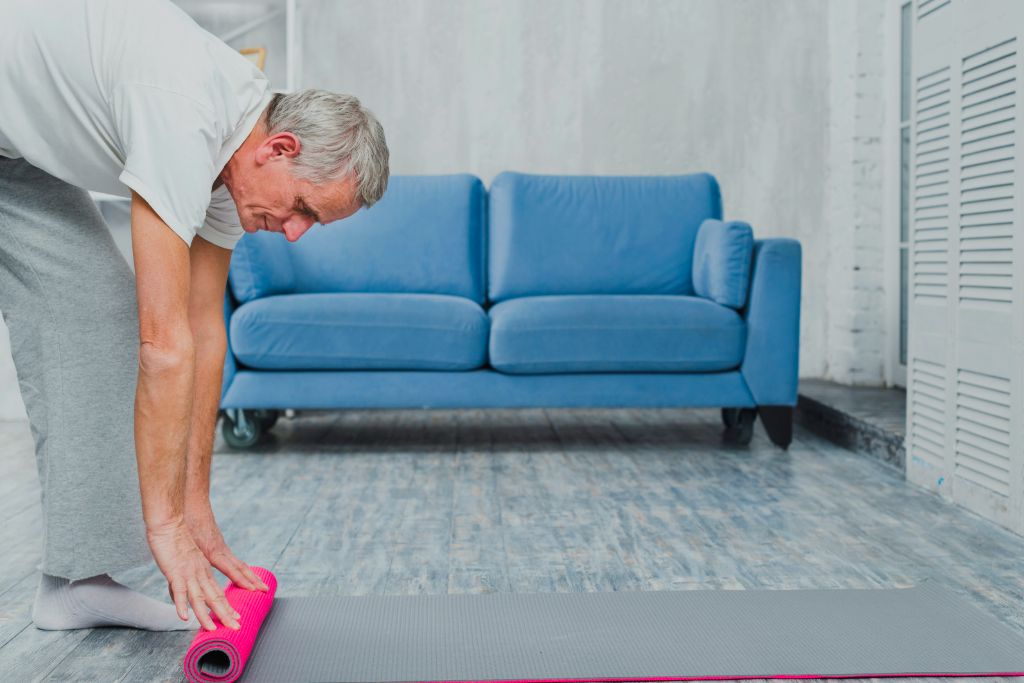
Progress into a gentle restorative pose by keeping your right leg extended while gently bending your knees to bring the left foot to the inner thigh of the right leg. Place another bolster lengthwise along your right thigh and fold forward over it, allowing your body to melt into the pose with every exhale. This position encourages a deep stretch in the hips and groin area. For further relaxation, place your hands on the mat, let your head rest on a pillow or bolster, and allow your body to fully hold the poses for several minutes, facilitating a profound release of tension.
One of the five or six poses in your favorite restorative series might include bringing the soles of your feet together with knees bent wide apart, placing your bolster under your knees for support. This helps in opening up the hip flexors and provides gentle relief for the hips and lower back. Practice yoga with mindfulness, focusing on the breath to deepen relaxation. For those who enjoy a deeper stretch, place your bolster lengthwise along your spine, lay back on it, bend your knees and allow your feet to touch and knees to open wide—a rejuvenating pose that revives the whole body.
In summary, following this gentle yoga sequence with emphasis on comfort and support from various props like blankets or a bolster, can significantly enhance your relaxation.
The Magic of Child’s Pose with Props for Deep Relaxation
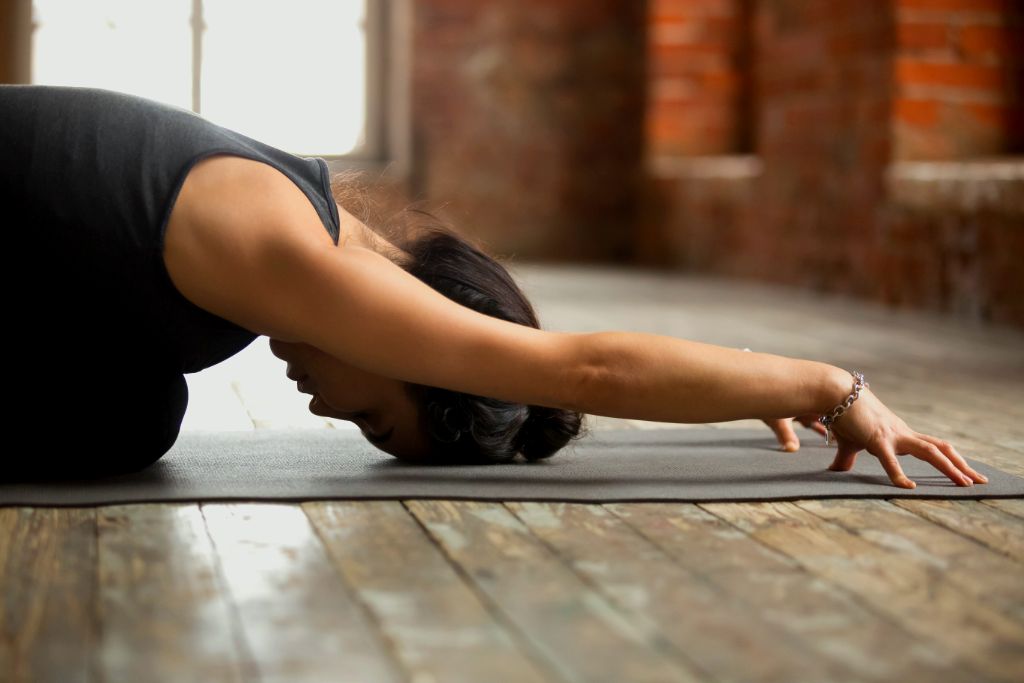
Child’s pose is a deeply relaxing yoga posture that can be enhanced with the use of props like a bolster. To begin, place a bolster horizontally in front of you and kneel down on the ground. Splitting your knees slightly wider than hip-width apart, slowly lower your torso onto the bolster and reach your arms out in front of you. This gentle stretch can help to release tension in the back, shoulders, and hips, allowing for a deeper sense of relaxation. Adding props like a bolster can provide extra support and comfort, making it easier to fully surrender into the pose and let go of any lingering stress or tension. Take a few deep breaths in this position and allow yourself to sink into a state of complete relaxation and peace.
Unlocking Calm with the Bound Angle Pose
When seeking to find inner peace and serenity, the Bound Angle Pose can be a powerful tool. By gently bringing the soles of the feet together and allowing the knees to drop open, this pose helps to release tension in the hips and lower back. To enhance the calming effects of this pose, using a bolster can provide added support and comfort.
Begin by sitting on the floor with your legs extended in front of you. Then, bend your knees and bring the soles of your feet together, allowing your knees to drop open towards the floor. For added support, place a bolster under your knees to help release any tension in the hips.
Relax into this pose and focus on your breath, allowing yourself to sink deeper into a state of calm and relaxation. With each inhale and exhale, feel the tension melting away as you find a sense of inner peace.
This article could be of interest to you: 21 Day Yoga Challenge for Beginners
Using the Supportive Reclined Butterfly Pose to Soothe the Nervous System
Supportive Reclined Butterfly Pose is a gentle and restorative yoga pose that can help soothe the nervous system and promote relaxation. To practice this pose, begin by lying on your back with a bolster or pillow underneath your spine for support. Then, bring the soles of your feet together and place your knees out to the sides in a butterfly shape. Allow your arms to rest by your sides with palms facing up. Close your eyes, take deep breaths, and focus on releasing any tension in your body. This pose can help calm the mind, reduce stress, and improve overall well-being. It is a wonderful way to unwind at the end of a long day or when you need a moment of peace and relaxation.
Essential Props for Enhancing Your Restorative Yoga Practice
Bolster – A bolster is a must-have prop for anyone looking to enhance their restorative yoga practice. A bolster can be used to provide support and cushioning for various poses, allowing you to relax more deeply into each posture. Whether you use it to help open up your chest in a heart opener pose or to support your legs in a reclined position, a bolster can make a world of difference in how comfortable and effective your practice is.
Place – When using a bolster, it’s important to place it strategically to get the most benefit out of it. For example, placing the bolster under your knees in a supine pose can help to alleviate pressure on your lower back. Experiment with different placements to find what works best for you and enhances your practice.

Choosing the Right Yoga Bolsters and Blankets
Choosing the Right Yoga Bolsters and Blankets can greatly enhance your practice. When selecting a bolster, consider the size and firmness that will best support your body during poses. It should be long enough to support your entire body and firm enough to maintain its shape. Similarly, when choosing a blanket, think about the material and thickness that will provide the right amount of cushioning and warmth. The blanket should be large enough to comfortably cover your body and place underneath or over areas that need extra support. Investing in the right props can make a big difference in your yoga practice.
How to Use Yoga Blocks for Support and Comfort
Bolster your yoga practice by using blocks for support and comfort. When using yoga blocks, it’s important to place them strategically to enhance your poses and provide stability. For example, in a supported bridge pose, you can place a block under your sacrum to elevate your hips and make the stretch more accessible. In a seated forward fold, you can use blocks under your hands to help maintain proper alignment and prevent strain on your back. Experiment with different ways to incorporate blocks into your practice to find what works best for you.
Incorporating a Yoga Mat and Pillows for Added Relaxation
To enhance your relaxation experience during yoga practice, consider incorporating a bolster and pillows. These accessories can provide additional support and comfort, allowing you to fully surrender into each pose and deepen your practice.
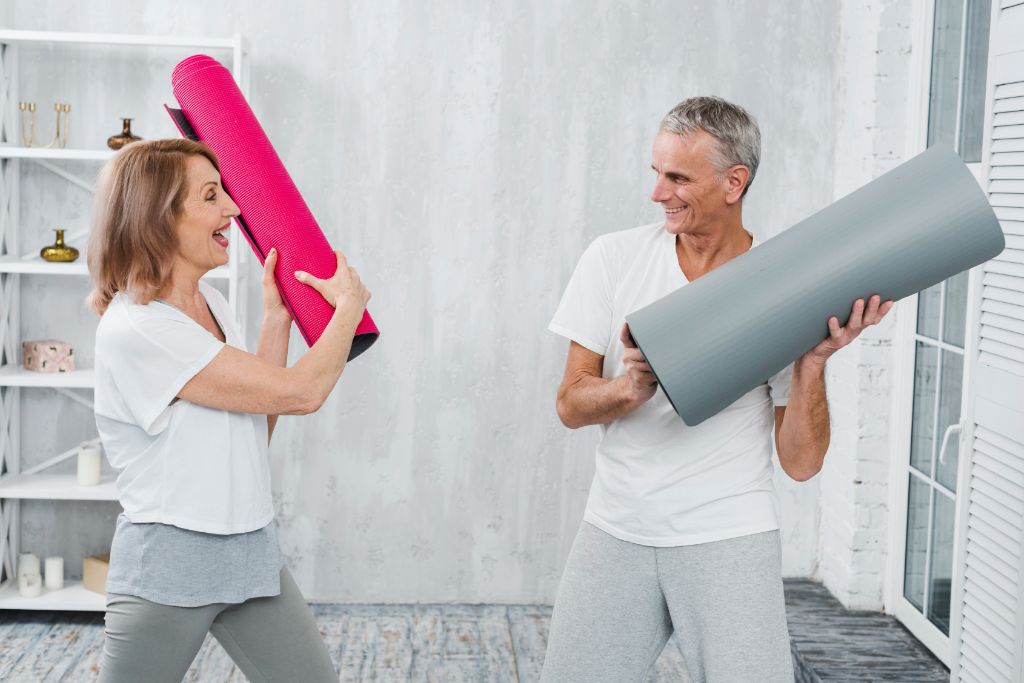
For optimal relaxation, place a soft pillow under your head during relaxation poses such as Savasana. This will help to release tension in your neck and promote a sense of calm.Additionally, using a bolster under your knees during seated or lying poses can reduce strain on your lower back and hips, allowing you to relax more fully into the pose.
Creating Your Own Restorative Yoga Sequence at Home
Creating your own restorative yoga sequence at home can be a deeply rewarding and personalized way to unwind and rejuvenate. Start by choosing a quiet, comfortable space where you won’t be disturbed. It’s important to gather a few props to support your practice. A bolster is essential for many restorative poses, as it helps to support the body and allow deeper relaxation. You can place it under your knees in a savasana (corpse pose) to relieve lower back tension, or under your chest in a heart-opening pose to encourage deeper breathing.
When designing your sequence, consider what your body needs. If it’s relaxation you’re seeking, focus on poses that calm the mind and relieve stress, such as forward folds and gentle twists. For rejuvenation, include more poses that gently stretch and open the body, like a supported fish pose. Remember to place your bolster and any other props within easy reach so you can smoothly transition between poses without breaking the peaceful flow of your session. With time and practice, your home sequence will become a cherished sanctuary of tranquility.
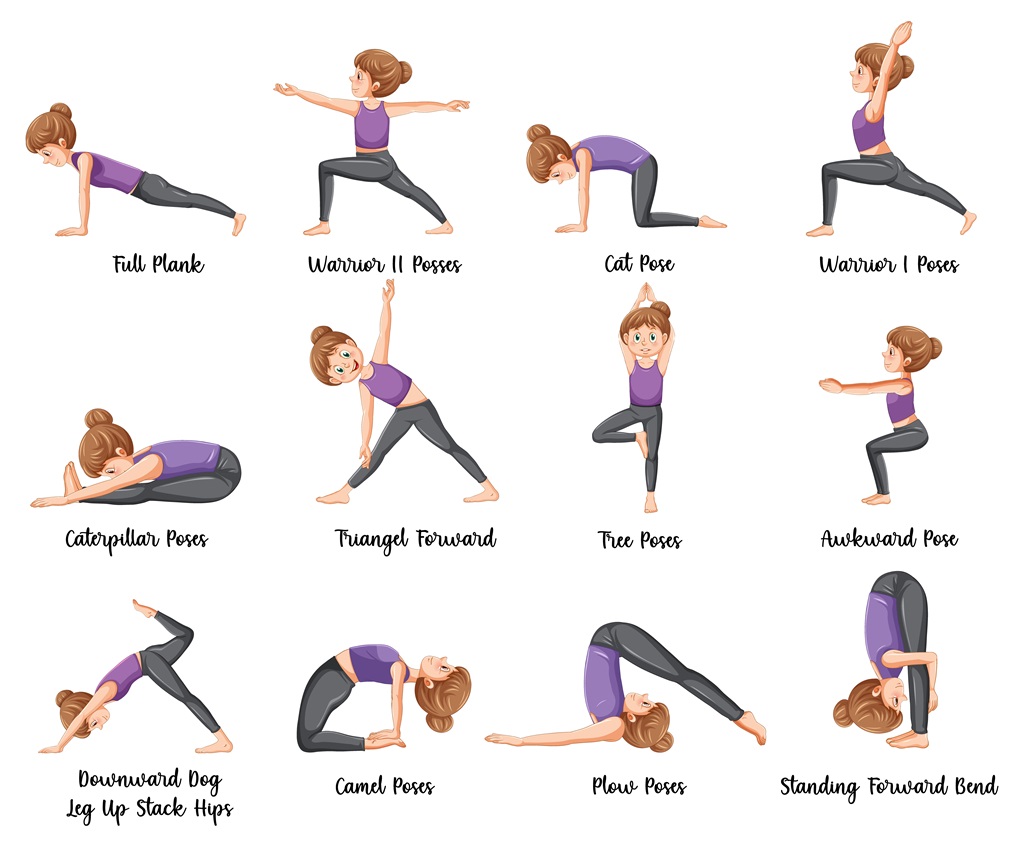
Step-by-Step Guide to Assembling a Restorative Sequence
Step 1: Prepare Your Space – Begin by finding a quiet and comfortable space where you can practice without distractions. Gather any props you may need, such as blankets, blocks, or straps, and place them within reach. Make sure the room is warm and dimly lit to create a soothing atmosphere for your practice.
Step 2: Center Yourself – Start by sitting in a comfortable cross-legged position and taking a few deep breaths to center yourself. Close your eyes and focus on the present moment, letting go of any tension or stress in your body and mind. This will help you connect with your inner self and set the tone for your restorative practice.
Step 3: Set Your Intention – Before beginning your sequence, take a moment to set an intention for your practice. This can be anything from finding peace and relaxation to releasing physical or emotional tension. Keep this intention in mind as you move through the sequence, allowing it to guide your movements and breath.
Step 4: Move Through Poses – Begin your restorative sequence by moving through a series of gentle poses designed to relax and rejuvenate your body. Focus on deepening your breath and releasing any tension in each pose, holding them for several minutes to allow your body to fully relax and restore. End your practice in a comfortable savasana, letting go of any remaining tension and allowing yourself to fully relax and rest.
Tips for Crafting a Personalized Yoga Practice that Soothes
Tips for Crafting a Personalized Yoga Practice that Soothes
1. Listen to your body: Pay attention to how you feel before, during, and after your practice. Modify poses or sequences as needed to support your unique needs and abilities.
2. Set an intention: Take a moment before starting your practice to set an intention or focus for your session. This can help guide your practice and create a sense of purpose and meaning.
3. Include breathwork: Incorporating pranayama techniques such as deep belly breathing or alternate nostril breathing can help calm the mind and soothe the nervous system.
4. Choose soothing practices: Select poses and sequences that promote relaxation and release tension, such as gentle stretches, restorative poses, or calming meditation practices.
Setting Up Your Space for the Ultimate Restorative Experience
Setting up your space for the ultimate restorative experience can be a game-changer when it comes to relaxation and rejuvenation. Creating a calming atmosphere in your room or designated rest area is key to promoting a sense of tranquility and well-being. Start by decluttering and organizing the space to remove any distractions that may hinder your ability to relax. Dimming the lights and adding soft, ambient lighting can help set the mood for relaxation. Consider incorporating comfortable pillows and blankets to enhance your comfort level and make the space inviting. Finally, adding elements of nature such as plants or natural materials can further contribute to a peaceful and restorative environment.
Integrating Restorative Yoga into Your Daily Routine for Stress Relief
Integrating Restorative Yoga into your daily routine can be a transformative strategy for managing stress and enhancing overall well-being. This form of yoga emphasizes gentle poses, deep breathing, and relaxation techniques to quiet the mind and release physical tension. By allocating just a few minutes each day to practice, you can create a sanctuary of peace amidst the chaos of everyday life.
Engaging in Restorative Yoga regularly can help in improving sleep quality, reducing anxiety levels, and boosting mood. It’s accessible to people of all fitness levels, requiring no special equipment beyond a yoga mat. Starting or ending your day with this practice can make a significant difference in how you feel both mentally and physically. In the long term, it equips you with the tools to handle stress more effectively, fostering a sense of balance and tranquility within.
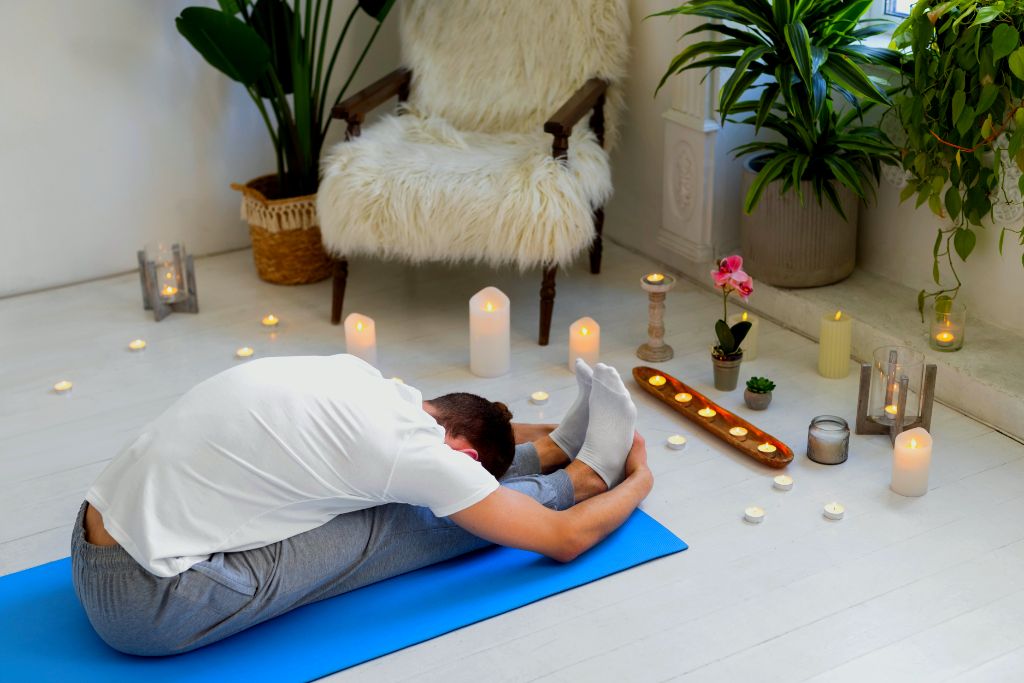
The Best Times to Practice Restorative Yoga for Stress Reduction
The best times to practice restorative yoga for stress reduction are usually in the morning or evening. In the morning, practicing restorative yoga can help set a positive tone for the day ahead, while in the evening, it can serve as a calming way to wind down and prepare for a restful night’s sleep. By practicing restorative yoga during these times, you can release tension and stress from the body and mind, promoting relaxation and a sense of peace.
It is also beneficial to practice restorative yoga during times of high stress, such as during a busy workday or after a particularly challenging event. By taking a few moments to engage in restorative yoga poses, you can not only reduce stress levels but also improve focus and mental clarity, allowing you to better navigate difficult situations with a sense of calm and composure.
This article could be of interest to you: What is Gravity Yoga?
Combining Yoga and Meditation for Enhanced Mind-Body Connection
Combining Yoga and Meditation can lead to a powerful synergy that enhances the mind-body connection. With Yoga, the focus is on physical postures, breathing techniques, and mindfulness practices that help strengthen and stretch the body. Meanwhile, Meditation involves quieting the mind, increasing self-awareness, and cultivating a sense of inner peace. When practiced together, these two disciplines complement each other beautifully, allowing practitioners to deepen their awareness of their bodies and minds. This enhanced mind-body connection can lead to greater overall well-being, reduced stress, and improved emotional regulation.
Maintaining Consistency in Your Restorative Practice for Long-Term Benefits
Maintaining consistency in your restorative practice is crucial for long-term benefits. By committing to a regular routine, you allow your body and mind to fully adapt and reap the rewards of your efforts. Consistency helps to build a strong foundation for your practice, creating a stable framework for growth and progress. It also allows you to track your improvements over time and make adjustments as needed. Ultimately, consistent practice leads to lasting results and a deeper sense of well-being.
Learning and Teaching Restorative Yoga: A Guide for Beginners and Instructors
Restorative Yoga, a practice that emphasizes physical, mental, and emotional relaxation, is facilitated through the use of props. For beginners and instructors alike, learning how to effectively bolster and place these supports under various parts of the body is crucial. The proper positioning enhances the comfort and effectiveness of each pose, allowing practitioners to sink deeply into relaxation. As both groups embark on this educational journey, they will discover that the meticulous arrangement of props is not merely a preliminary step but an integral aspect of ensuring the restorative practice’s success.
Instructors, in particular, must hone their skills in guiding students to bolster their own practice and place props in a way that suits individual needs, thus fostering a nurturing and inclusive environment. This endeavor requires patience, observation, and the ability to communicate clearly and compassionately. For beginners, understanding how to properly use these props can transform their practice from a superficial attempt at relaxation to a profound experience of physical and emotional healing. By focusing on these foundational elements, both beginners and instructors can deepen their engagement with Restorative Yoga, making it a more effective tool for relaxation and rejuvenation.
Essential Qualities of an Effective Restorative Yoga Teacher
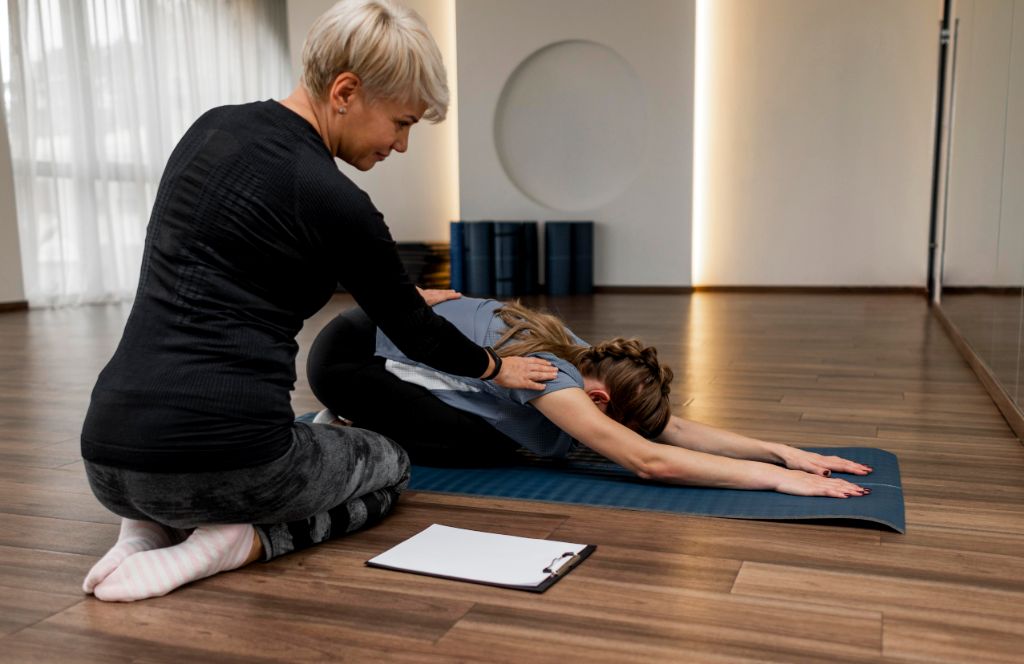
- Patience: An effective restorative yoga teacher must possess patience to guide students through each pose with care and understanding, allowing for proper alignment and adjustments without rushing the process.
- Empathy: A restorative yoga teacher should have empathy to connect with students on a deeper level, understanding their individual needs and providing a nurturing environment for healing and relaxation.
- Knowledge: It is essential for a restorative yoga teacher to have a strong knowledge of anatomy, physiology, and the principles of restorative yoga in order to safely guide students through various poses and sequences.
- Communication: Effective communication skills are crucial for a restorative yoga teacher to provide clear and concise instructions, offer helpful feedback, and create a supportive and open atmosphere for students to express their needs and concerns.
Benefits of Yoga Teacher Training Focused on Restorative Practices
A training program that focuses on restorative yoga practices offers a range of benefits for both the teacher and their students. Restorative practices help reduce stress, promote relaxation, and balance the body and mind. Teachers who undergo this specialized training can enhance their knowledge of restorative poses and techniques, allowing them to create a safe and nurturing space for students to unwind and rejuvenate. By incorporating restorative practices into their classes, teachers can help students release tension, improve flexibility, and cultivate a sense of inner peace and well-being.
Expanding Your Knowledge with Restorative Yoga Sequence PDFs and Resources
Diving into the profound relaxation techniques offered by restorative yoga can significantly improve your mental, physical, and emotional well-being. One of the best ways to embark on this rejuvenating journey is by utilizing Restorative Yoga Sequence PDFs. These resources are invaluable for beginners and seasoned yogis alike, offering step-by-step instructions and detailed illustrations to enhance your practice.
Moreover, these PDFs are designed to guide you through various poses and sequences that aim to reduce stress, improve flexibility, and promote overall health. By dedicating time to explore these materials, you’re not just expanding your knowledge; you’re also nurturing a deeper connection with your body and mind. The convenience of Restorative Yoga Sequence PDFs allows you to practice at your own pace and comfort, making it a fantastic tool for anyone looking to delve deeper into the restorative aspects of yoga.
This article could be of interest to you: How to Think Positive When Depressed
60 Minute Restorative Yoga Sequence
Embracing a 1 hour restorative yoga sequence can be a transformative experience, offering deep relaxation and a much-needed reprieve from the stress of daily life. This carefully curated sequence is designed to soothe both body and mind, using gentle poses that require minimal effort yet provide maximum benefit. Whether you’re a seasoned yogi or new to the practice, you’ll find this sequence to be a perfect addition to your wellness routine.
- Watch the 1 hour restorative yoga sequence In the educational video that follows.
